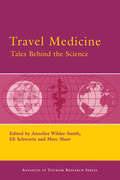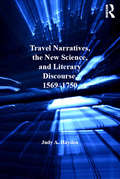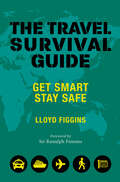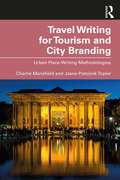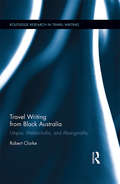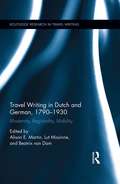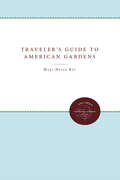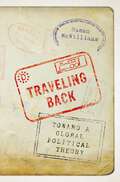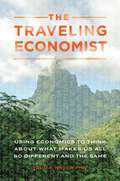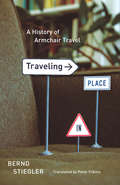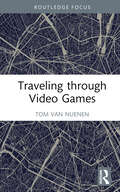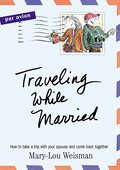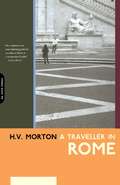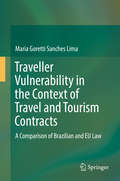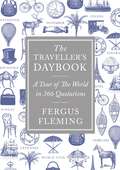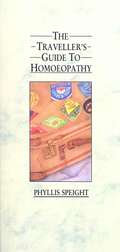- Table View
- List View
Travel Medicine: Tales Behind the Science
Travel to exotic places is fascinating, and equally so are infections and other dangers of exotic travel. Moreover, one need not be traveling to suffer these maladies; sometimes they travel to you. The enormous global mobility demands a public health response. The result is the concept of ‘travel medicine’ as a separate discipline. This book describes the evolution of travel medicine, travel vaccines, malaria prophylaxis and infections of adventure and leisure. This book is unique and different to the standard textbooks on travel medicine. It provides rare insights into many of the behind-the-scenes in travel medicine, personal stories of failures and successes of travel medicine practitioners, the 'real life' tales that unravel the science behind travel medicine. We believe that the best lessons are learned from personal stories.Not every travel is fun. Some travel is for a cause, be it religious or humanitarian, or be it to escape certain political systems. We have added stories on the tragedies of so-called 'undocumented refugees', and stories written by colleagues who were involved in humanitarian care. Pilgrimages attract large number of 'travelers' and yet we know so little about these pilgrimages. Chapters on the Muslim, Hindu, Buddhist, and Christian pilgrimages aim to correct this. Diseases also travel. The spread of global diseases and pandemics is fascinating. This book provides an overview of the pandemics, in particular that of cholera, yellow fever, severe acute respiratory syndrome and influenza. Globalization, migration and health lead to a history of disease and disparity in the global village - our world. And what about the revised International Health Regulations- what do we need to know about them in the context of travel medicine?In the next millennium, our world will have inherited further global movement. It may even include travel to aerospace. The 'Epilogue' awakes some of our old dreams - the last frontier, space travel…Annelies Wilder-Smith has lived in China, Papua New Guinea, Nepal, New Zealand, and Switzerland. She is currently based in Singapore from where she continues to travel extensively throughout Asia. She is the Head of the Travellers Health ' Vaccination Centre in Singapore, one of the largest travel clinics in Asia. She was in a unique position to do research on W135 meningococcal disease in Hajj pilgrims during the outbreak. She 'lived through' the SARS epidemic in Singapore. Eli Schwartz is the Director of the Center for Geographic Medicine and Tropical Diseases at Sheba Medical Center, Tel-Aviv University, Israel. Eli is a 'real' tropical medicine specialist. He obtained all his experience in the field, including Nepal, Tibet, and numerous adventure travels to Africa where he prefers to do his studies on the sides of the Omo River.Marc Shaw is a passionate traveler, doctor, actor and observer of fine humor. His favorite pastime is to be an expedition doctor. This has taken him to exotic places such as Namibia, Mongolia, Pitcairn Islands, and to the Amazon. He is the Director of WORLDWIDE Travellers' Health Centres in New Zealand.
Travel Narratives, the New Science, and Literary Discourse, 1569-1750
by Judy A. HaydenThe focus of this volume is the intersection and the cross-fertilization between the travel narrative, literary discourse, and the New Philosophy in the early modern to early eighteenth-century historical periods. Contributors examine how, in an historical era which realized an emphasis on nation and during a time when exploration was laying the foundation for empire, science and the literary discourse of the travel narrative become intrinsically linked. Together, the essays in this collection point out the way in which travel narratives reflect the anxiety from changes brought about through the discoveries of the 'new knowledge' and the way this knowledge in turn provided a new and more complex understanding of the expanding world in which the writers lived. The worlds in this text are many (for no 'world' is monomial), from the antipodes to the New World, from the heavens to the seas, and from fictional worlds to the world which contains and/or constructs one's nation and empire. All of these essays demonstrate the manner in which the New Philosophy dramatically changed literary discourse.
Travel Narratives, the New Science, and Literary Discourse, 1569-1750
by Judy A. HaydenThe focus of this volume is the intersection and the cross-fertilization between the travel narrative, literary discourse, and the New Philosophy in the early modern to early eighteenth-century historical periods. Contributors examine how, in an historical era which realized an emphasis on nation and during a time when exploration was laying the foundation for empire, science and the literary discourse of the travel narrative become intrinsically linked. Together, the essays in this collection point out the way in which travel narratives reflect the anxiety from changes brought about through the discoveries of the 'new knowledge' and the way this knowledge in turn provided a new and more complex understanding of the expanding world in which the writers lived. The worlds in this text are many (for no 'world' is monomial), from the antipodes to the New World, from the heavens to the seas, and from fictional worlds to the world which contains and/or constructs one's nation and empire. All of these essays demonstrate the manner in which the New Philosophy dramatically changed literary discourse.
The Travel Survival Guide: Get Smart, Stay Safe
by Lloyd FigginsThe rewards you can reap from exploring this amazing planet are incalculable. Every year, more and more of us are discovering the joy, the excitement, the sheer sense of adventure in roaming the world.
Travel Writing for Tourism and City Branding: Urban Place-Writing Methodologies
by Charlie Mansfield Jasna Potočnik ToplerTravel Writing for Tourism and City Branding is an insightful, expert-led book which provides tourism students with a practice-based approach to producing researched literary travel writing on an urban destination, using the writing process as a research tool in itself. The book is scientifically supported with full academic references for researchers. On a global basis, city councils and destination managers are seeking new ways to commission and sponsor professional content authors as part of place-branding projects for tourism development. Given the increasing prevalence of such content within the tourism industry, this book provides a cohesive overview of literary travel writing, presenting it as an enquiry process that can be applied by writer-researchers to spaces that have value to them. Travel writing is presented as a methodological practice that researchers can learn and apply to their own projects, both in academic settings and in commercial city branding. Examples of literary travel writing are carefully examined throughout and their affects refracted through further work. Enriched with a wealth of case studies, chapters are presented in such a way that readers can take the work as a model for their own projects. This informative and practical volume will be of great interest to students of tourism marketing, destination marketing, place branding and travel writing, as well as current creators of commercial tourism marketing content.
Travel Writing for Tourism and City Branding: Urban Place-Writing Methodologies
by Charlie Mansfield Jasna Potočnik ToplerTravel Writing for Tourism and City Branding is an insightful, expert-led book which provides tourism students with a practice-based approach to producing researched literary travel writing on an urban destination, using the writing process as a research tool in itself. The book is scientifically supported with full academic references for researchers. On a global basis, city councils and destination managers are seeking new ways to commission and sponsor professional content authors as part of place-branding projects for tourism development. Given the increasing prevalence of such content within the tourism industry, this book provides a cohesive overview of literary travel writing, presenting it as an enquiry process that can be applied by writer-researchers to spaces that have value to them. Travel writing is presented as a methodological practice that researchers can learn and apply to their own projects, both in academic settings and in commercial city branding. Examples of literary travel writing are carefully examined throughout and their affects refracted through further work. Enriched with a wealth of case studies, chapters are presented in such a way that readers can take the work as a model for their own projects. This informative and practical volume will be of great interest to students of tourism marketing, destination marketing, place branding and travel writing, as well as current creators of commercial tourism marketing content.
Travel Writing from Black Australia: Utopia, Melancholia, and Aboriginality (Routledge Research in Travel Writing)
by Robert ClarkeOver the past thirty years the Australian travel experience has been ‘Aboriginalized’. Aboriginality has been appropriated to furnish the Australian nation with a unique and identifiable tourist brand. This is deeply ironic given the realities of life for many Aboriginal people in Australian society. On the one hand, Aboriginality in the form of artworks, literature, performances, landscapes, sport, and famous individuals is celebrated for the way it blends exoticism, mysticism, multiculturalism, nationalism, and reconciliation. On the other hand, in the media, cinema, and travel writing, Aboriginality in the form of the lived experiences of Aboriginal people has been exploited in the service of moral panic, patronized in the name of white benevolence, or simply ignored. For many travel writers, this irony - the clash between different regimes of valuing Aboriginality - is one of the great challenges to travelling in Australia. Travel Writing from Black Australia examines the ambivalence of contemporary travelers’ engagements with Aboriginality. Concentrating on a period marked by the rise of discourses on Aboriginality championing indigenous empowerment, self-determination, and reconciliation, the author analyses how travel to Black Australia has become, for many travelers, a means of discovering ‘new’—and potentially transformative—styles of interracial engagement.
Travel Writing from Black Australia: Utopia, Melancholia, and Aboriginality (Routledge Research in Travel Writing)
by Robert ClarkeOver the past thirty years the Australian travel experience has been ‘Aboriginalized’. Aboriginality has been appropriated to furnish the Australian nation with a unique and identifiable tourist brand. This is deeply ironic given the realities of life for many Aboriginal people in Australian society. On the one hand, Aboriginality in the form of artworks, literature, performances, landscapes, sport, and famous individuals is celebrated for the way it blends exoticism, mysticism, multiculturalism, nationalism, and reconciliation. On the other hand, in the media, cinema, and travel writing, Aboriginality in the form of the lived experiences of Aboriginal people has been exploited in the service of moral panic, patronized in the name of white benevolence, or simply ignored. For many travel writers, this irony - the clash between different regimes of valuing Aboriginality - is one of the great challenges to travelling in Australia. Travel Writing from Black Australia examines the ambivalence of contemporary travelers’ engagements with Aboriginality. Concentrating on a period marked by the rise of discourses on Aboriginality championing indigenous empowerment, self-determination, and reconciliation, the author analyses how travel to Black Australia has become, for many travelers, a means of discovering ‘new’—and potentially transformative—styles of interracial engagement.
Travel Writing in Dutch and German, 1790-1930: Modernity, Regionality, Mobility (Routledge Research in Travel Writing)
by Alison E. Martin Lut Missinne Beatrix Van DamThis volume focuses on how travel writing contributed to cultural and intellectual exchange in and between the Dutch- and German-speaking regions from the 1790s to the twentieth-century interwar period. Drawing on a hitherto largely overlooked body of travelers whose work ranges across what is now Germany and Austria, the Netherlands and Dutch-speaking Belgium, the Dutch East Indies and Suriname, the contributors highlight the interrelations between the regional and the global and the role alterity plays in both spheres. They therefore offer a transnational and transcultural perspective on the ways in which the foreign was mediated to audiences back home. By combining a narrative perspective on travel writing with a socio-historically contextualized approach, essays emphasize the importance of textuality in travel literature as well as the self-positioning of such accounts in their individual historical and political environments. The first sustained analysis to focus specifically on these neighboring cultural and linguistic areas, this collection demonstrates how topographies of knowledge were forged across these regions by an astonishingly diverse range of travelling individuals from professional scholars and writers to art dealers, soldiers, (female) explorers, and scientific collectors. The contributors address cultural, aesthetic, political, and gendered aspects of travel writing, drawing productively on other disciplines and areas of scholarly research that encompass German Studies, Low Countries Studies, comparative literature, aesthetics, the history of science, literary geography, and the history of publishing.
Travel Writing in Dutch and German, 1790-1930: Modernity, Regionality, Mobility (Routledge Research in Travel Writing)
This volume focuses on how travel writing contributed to cultural and intellectual exchange in and between the Dutch- and German-speaking regions from the 1790s to the twentieth-century interwar period. Drawing on a hitherto largely overlooked body of travelers whose work ranges across what is now Germany and Austria, the Netherlands and Dutch-speaking Belgium, the Dutch East Indies and Suriname, the contributors highlight the interrelations between the regional and the global and the role alterity plays in both spheres. They therefore offer a transnational and transcultural perspective on the ways in which the foreign was mediated to audiences back home. By combining a narrative perspective on travel writing with a socio-historically contextualized approach, essays emphasize the importance of textuality in travel literature as well as the self-positioning of such accounts in their individual historical and political environments. The first sustained analysis to focus specifically on these neighboring cultural and linguistic areas, this collection demonstrates how topographies of knowledge were forged across these regions by an astonishingly diverse range of travelling individuals from professional scholars and writers to art dealers, soldiers, (female) explorers, and scientific collectors. The contributors address cultural, aesthetic, political, and gendered aspects of travel writing, drawing productively on other disciplines and areas of scholarly research that encompass German Studies, Low Countries Studies, comparative literature, aesthetics, the history of science, literary geography, and the history of publishing.
The Traveler's Guide to American Gardens
by Mary Helen Ray and Robert P. NicholkThis new edition includes more than one thousand concise entries, organized by state and city, listing specific details on the location, hours, and history of each garden. For each state, gardens are located on a map. The focus is on historic gardens in existence for over seventy-five years. Some are outstanding examples of their era, many are associated with a distinguished person or historical event, others are noteworthy for pioneering designs or innovative plant material.Originally published in 1988. A UNC Press Enduring Edition -- UNC Press Enduring Editions use the latest in digital technology to make available again books from our distinguished backlist that were previously out of print. These editions are published unaltered from the original, and are presented in affordable paperback formats, bringing readers both historical and cultural value.
The Traveling Economist: Using Economics to Think about What Makes Us All So Different and the Same
by Todd A. KnoopThis fascinating book introduces travelers—of the body or the mind—to a few simple economic concepts that will help them to think differently and more deeply about the differences between the people and the places they visit during their journeys.The principles and mechanics of economics are firmly rooted in everything around us, in our home country as well as in every nation and culture around the world. Having a basic grasp of economics can help all travelers to think more carefully about why things work differently in different places. Armed with this knowledge, readers will be equipped to better appreciate—and learn from—the beauty and complexity of the world around us.The Traveling Economist: Using Economics to Think about What Makes Us All So Different and the Same illustrates important economic concepts that every traveler and world citizen should understand. Employing clear, jargon-free explanations and illustrated with real-life examples, Knoop uniquely focuses on the interplay between travel and economics. He uses our shared travel experiences to illustrate exactly how economic thinking supplies such a powerful framework for understanding the world around us. More than simply explaining economics through travel experiences, this book enables adventurers who desperately want to avoid being tourists—i.e., people who travel to see what they know is there—to become explorers: those who learn each and every day from what they witness.
The Traveling Economist: Using Economics to Think about What Makes Us All So Different and the Same
by Todd A. KnoopThis fascinating book introduces travelers—of the body or the mind—to a few simple economic concepts that will help them to think differently and more deeply about the differences between the people and the places they visit during their journeys.The principles and mechanics of economics are firmly rooted in everything around us, in our home country as well as in every nation and culture around the world. Having a basic grasp of economics can help all travelers to think more carefully about why things work differently in different places. Armed with this knowledge, readers will be equipped to better appreciate—and learn from—the beauty and complexity of the world around us.The Traveling Economist: Using Economics to Think about What Makes Us All So Different and the Same illustrates important economic concepts that every traveler and world citizen should understand. Employing clear, jargon-free explanations and illustrated with real-life examples, Knoop uniquely focuses on the interplay between travel and economics. He uses our shared travel experiences to illustrate exactly how economic thinking supplies such a powerful framework for understanding the world around us. More than simply explaining economics through travel experiences, this book enables adventurers who desperately want to avoid being tourists—i.e., people who travel to see what they know is there—to become explorers: those who learn each and every day from what they witness.
Traveling in Place: A History of Armchair Travel
by Bernd StieglerArmchair travel may seem like an oxymoron. Doesn’t travel require us to leave the house? And yet, anyone who has lost herself for hours in the descriptive pages of a novel or the absorbing images of a film knows the very real feeling of having explored and experienced a different place or time without ever leaving her seat. No passport, no currency, no security screening required—the luxury of armchair travel is accessible to us all. In Traveling in Place, Bernd Stiegler celebrates this convenient, magical means of transport in all its many forms. Organized into twenty-one “legs”—or short chapters—Traveling in Place begins with a consideration of Xavier de Maistre’s 1794 Voyage autour de ma chambre, an account of the forty-two-day “journey around his room” Maistre undertook as a way to entertain himself while under house arrest. Stiegler is fascinated by the notion of exploring the familiar as though it were completely new and strange. He engages writers as diverse as Roussel, Beckett, Perec, Robbe-Grillet, Cortázar, Kierkegaard, and Borges, all of whom show how the everyday can be brilliantly transformed. Like the best guidebooks, Traveling in Place is more interested in the idea of travel as a state of mind than as a physical activity, and Stiegler reflects on the different ways that traveling at home have manifested themselves in the modern era, from literature and film to the virtual possibilities of the Internet, blogs, and contemporary art. Reminiscent of the pictorial meditations of Sebald, but possessed of the intellectual playfulness of Calvino, Traveling in Place offers an entertaining and creative Baedeker to journeying at home.
Traveling in Place: A History of Armchair Travel
by Bernd StieglerArmchair travel may seem like an oxymoron. Doesn’t travel require us to leave the house? And yet, anyone who has lost herself for hours in the descriptive pages of a novel or the absorbing images of a film knows the very real feeling of having explored and experienced a different place or time without ever leaving her seat. No passport, no currency, no security screening required—the luxury of armchair travel is accessible to us all. In Traveling in Place, Bernd Stiegler celebrates this convenient, magical means of transport in all its many forms. Organized into twenty-one “legs”—or short chapters—Traveling in Place begins with a consideration of Xavier de Maistre’s 1794 Voyage autour de ma chambre, an account of the forty-two-day “journey around his room” Maistre undertook as a way to entertain himself while under house arrest. Stiegler is fascinated by the notion of exploring the familiar as though it were completely new and strange. He engages writers as diverse as Roussel, Beckett, Perec, Robbe-Grillet, Cortázar, Kierkegaard, and Borges, all of whom show how the everyday can be brilliantly transformed. Like the best guidebooks, Traveling in Place is more interested in the idea of travel as a state of mind than as a physical activity, and Stiegler reflects on the different ways that traveling at home have manifested themselves in the modern era, from literature and film to the virtual possibilities of the Internet, blogs, and contemporary art. Reminiscent of the pictorial meditations of Sebald, but possessed of the intellectual playfulness of Calvino, Traveling in Place offers an entertaining and creative Baedeker to journeying at home.
Traveling in Place: A History of Armchair Travel
by Bernd StieglerArmchair travel may seem like an oxymoron. Doesn’t travel require us to leave the house? And yet, anyone who has lost herself for hours in the descriptive pages of a novel or the absorbing images of a film knows the very real feeling of having explored and experienced a different place or time without ever leaving her seat. No passport, no currency, no security screening required—the luxury of armchair travel is accessible to us all. In Traveling in Place, Bernd Stiegler celebrates this convenient, magical means of transport in all its many forms. Organized into twenty-one “legs”—or short chapters—Traveling in Place begins with a consideration of Xavier de Maistre’s 1794 Voyage autour de ma chambre, an account of the forty-two-day “journey around his room” Maistre undertook as a way to entertain himself while under house arrest. Stiegler is fascinated by the notion of exploring the familiar as though it were completely new and strange. He engages writers as diverse as Roussel, Beckett, Perec, Robbe-Grillet, Cortázar, Kierkegaard, and Borges, all of whom show how the everyday can be brilliantly transformed. Like the best guidebooks, Traveling in Place is more interested in the idea of travel as a state of mind than as a physical activity, and Stiegler reflects on the different ways that traveling at home have manifested themselves in the modern era, from literature and film to the virtual possibilities of the Internet, blogs, and contemporary art. Reminiscent of the pictorial meditations of Sebald, but possessed of the intellectual playfulness of Calvino, Traveling in Place offers an entertaining and creative Baedeker to journeying at home.
Traveling in Place: A History of Armchair Travel
by Bernd StieglerArmchair travel may seem like an oxymoron. Doesn’t travel require us to leave the house? And yet, anyone who has lost herself for hours in the descriptive pages of a novel or the absorbing images of a film knows the very real feeling of having explored and experienced a different place or time without ever leaving her seat. No passport, no currency, no security screening required—the luxury of armchair travel is accessible to us all. In Traveling in Place, Bernd Stiegler celebrates this convenient, magical means of transport in all its many forms. Organized into twenty-one “legs”—or short chapters—Traveling in Place begins with a consideration of Xavier de Maistre’s 1794 Voyage autour de ma chambre, an account of the forty-two-day “journey around his room” Maistre undertook as a way to entertain himself while under house arrest. Stiegler is fascinated by the notion of exploring the familiar as though it were completely new and strange. He engages writers as diverse as Roussel, Beckett, Perec, Robbe-Grillet, Cortázar, Kierkegaard, and Borges, all of whom show how the everyday can be brilliantly transformed. Like the best guidebooks, Traveling in Place is more interested in the idea of travel as a state of mind than as a physical activity, and Stiegler reflects on the different ways that traveling at home have manifested themselves in the modern era, from literature and film to the virtual possibilities of the Internet, blogs, and contemporary art. Reminiscent of the pictorial meditations of Sebald, but possessed of the intellectual playfulness of Calvino, Traveling in Place offers an entertaining and creative Baedeker to journeying at home.
Traveling through Video Games (Routledge Advances in Game Studies)
by Tom van NuenenThis book unlocks an understanding of video games as virtual travel. It explains how video game design increasingly takes cues from the promotional language of tourism, and how this connection raises issues of power and commodification. Bridging the disciplinary gap between game and tourism studies, the book offers a comprehensive account of touristic gazing in games such as The Legend of Zelda: Breath of the Wild, Minecraft, and Microsoft Flight Simulator 2020. Traveling through video games involves a mythological promise of open-ended opportunity, summarized in the slogan you can go there. Van Nuenen discusses the scale of game worlds, the elusive nature of freedom and control, and the pivotal role of work in creating a sense of belonging. The logic of tourism is fundamentally consumptive—but through design choices, players can also be invited to approach their travels more critically. This is the difference between moving through a game world, and being moved by it. This interdisciplinary and innovative study will interest students and scholars of digital media studies, game studies, tourism and technology, and the Digital Humanities.
Traveling through Video Games (Routledge Advances in Game Studies)
by Tom van NuenenThis book unlocks an understanding of video games as virtual travel. It explains how video game design increasingly takes cues from the promotional language of tourism, and how this connection raises issues of power and commodification. Bridging the disciplinary gap between game and tourism studies, the book offers a comprehensive account of touristic gazing in games such as The Legend of Zelda: Breath of the Wild, Minecraft, and Microsoft Flight Simulator 2020. Traveling through video games involves a mythological promise of open-ended opportunity, summarized in the slogan you can go there. Van Nuenen discusses the scale of game worlds, the elusive nature of freedom and control, and the pivotal role of work in creating a sense of belonging. The logic of tourism is fundamentally consumptive—but through design choices, players can also be invited to approach their travels more critically. This is the difference between moving through a game world, and being moved by it. This interdisciplinary and innovative study will interest students and scholars of digital media studies, game studies, tourism and technology, and the Digital Humanities.
Traveling While Married
by Mary-Lou WeismanAh travel! New scenery, exciting adventures, time alone with a loved one. Truth is, travel can make or break a relationship. Just negotiating when to leave for the airport can be tricky: she insists on arriving hours ahead of flight time, he likes the excitement of a photo finish. But as Mary-Lou Weisman sees it, "The inevitable rage with which we begin each trip only helps us to better appreciate the good times that lie ahead." Or maybe not. When people have jet lag, can't speak the language, figure out the money, or maintain intestinal regularity, they get cranky. And since they don't know anybody else in Kyoto to take it out on, they take it out on each other. Alas, couples therapy is rarely available on vacation, which is why we need this hilarious and truthful take on travel and togetherness. Using her own misadventures--from honeymoon through Elderhostel--Weisman exposes all the gender landmines: Destinations: He wants to outrun molten lava down a volcano, she prefers raking gravel in a Buddhist monastery. Motivations: She longs for a change of scenery, he hopes for a change of self. Preparations: She keeps a file of required sights, he won't be bullied by travel guides. Accommodations: She divides every hotel room in half so he'll know on which side of the bed to throw his wet towel. Inclinations: She shops a country, he eats it. This is the real skinny on what happens when Mars and Venus hit the road. With a sly wink, a comic nod, and just the right amount of optimism, Weisman shows us that despite the shortcomings of one's beloved, harmonious travel is possible.
A Traveller In Rome
by H.v. MortonH.V. Morton's evocative account of his days in 1950s Rome-the fabled era of La Dolce Vita-remains an indispensable guide to what makes the Eternal City eternal. In his characteristic anecdotal style, Morton leads the reader on a well-informed and delightful journey around the city, from the Fontana di Trevi and the Colosseum to the Vatican Gardens loud with exquisite birdsong. He also takes time to consider such eternal topics as the idiosyncrasies of Italian drivers as well as the ominous possibilities behind an unusual absence of pigeons in the Piazza di San Pietro. As TourismWorld.com commented recently: "H.V. Morton.. . .wrote of Rome with style, involvement, and passion. His book In Search of Rome is perhaps the definitive guide book on the Eternal City."
Traveller Vulnerability in the Context of Travel and Tourism Contracts: A Comparison Of Brazilian And Eu Law
by Maria Goretti Sanches LimaThe book highlights the link between consumers and travellers, identifying the meaning of vulnerability in Brazil and the EU. It also covers different types of contracts for tourism and travel services, including online booking processes. Only after 2015, as a result of the directive on package travel and linked travel arrangements, did the EU begin viewing travellers as consumers in the sense of Union Consumer Law; conversely, in Brazil, the traveller has no legal status whatsoever and is considered solely a consumer. As the traveller is implicitly a consumer he/she is subject to vulnerability. However, the definition of vulnerability differs considerably between Brazil and the EU: while in Brazil it is a principle stemming from the Consumer Defence Code, covering all consumers, in the EU vulnerability is not an established principle. In the EU, although the average consumer is assumed to be reasonably well informed, observant and circumspect, they are also recognised as the weaker party in the contract. That recognition does not fit with the notion of "confident consumer". Vulnerable consumers in the EU are those whose individual characteristics, such as their age, physical or mental infirmity, or credulity, make them particularly susceptible to unfair commercial practices. Conversely, in Brazil these consumers are seen as being hyper-vulnerable, rather than solely vulnerable. In this context, travellers are in a weaker position than regular consumers buying goods or services, because they are outside of their domicile or jurisdiction for a brief or extended period of time. This book examines two types of traveller vulnerability that make travellers, particularly international ones, a special type of consumers: 1. External and 2. Legal (jurisdiction). Travellers’ vulnerability mainly stems from consumers travelling to different markets and different cultures. As such, they are subject to different laws that require special global attention. While both the EU and Brazilian system have their respective advantages and disadvantages, the goal of both must be to further increase protection for travellers, including business travellers. In consumer societies, the traveller is indeed a consumer by logical causation and hence a “special consumer”.
The Traveller's Daybook: A Tour of the World in 366 Quotations
by Fergus FlemingThe Traveller's Daybook invites you to cross ocean, desert, mountain and ice-cap in the company of the world's greatest explorers, wanderers and writers... Fergus Fleming's day-by-day anthology of travel writing ranges widely across time as well as place: from Christopher Columbus's 'discovery' of the West Indies in 1492 to Anton Chekhov's journey through Siberia in the nineteenth century and on to Wilfred Thesiger's wanderings in Arabia's 'empty quarter' in the 1940s. Each quoted extract is accompanied by a brief commentary that introduces the writer and establishes the context of the excerpt. Fleming's itinerary offers both a wealth of exotic destinations, and a many-hued patchwork of moods: the astonishment of the seventeenth-century diarist John Evelyn on beholding the size of women's shoes in Venice; the stoic courage of Captain Scott facing death at forty degrees below zero; the exasperation of Dylan Thomas at finding himself in a 'stifflipped, liverish, British Guest House in puking Abadan'; and the philosophical introspection of Fridtjof Nansen as he drifts in an 'interminable and rigid world' of Arctic ice. Here you will find Napoleon's travel tips to his niece, a flight over Germany with Hitler, and an ex-pat dinner in Morocco where human blood is served from the fridge by the pint. Covering the whole calendar, including leap years, these 366 journeys are by turn lyrical, witty, tragic and bizarre - but always entertaining.
The Traveller's Guide to Homoeopathy
by Phyllis SpeightDefinitely not for those of you who are contemplating taking on Mount Everest or the Amazon, but this simple guide is the most sensible thing to pack for a business trip or holiday.With a small, basic homoeopathic kit and a copy of this guide you can be reasonably sure that you will be safe from an acute attack of ill-health.Various drugs are available to combat troubles caused by travel but in the majority of cases homoeopathic remedies are much more effective. Their additional advantage is that they have no side effects whatsoever.Full instructions, dosages and potencies are given.
